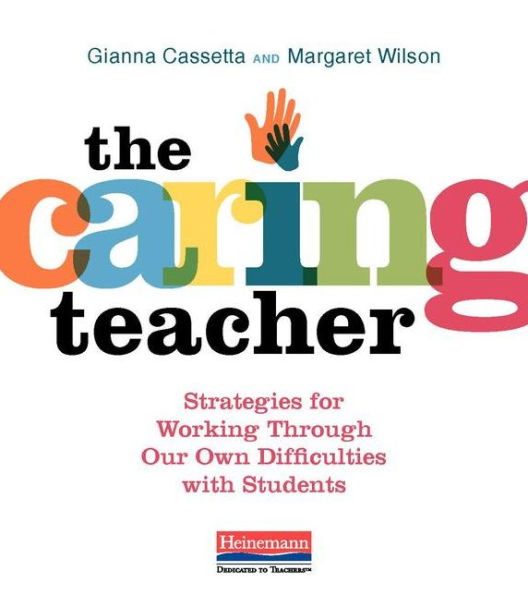Table of Contents
Acknowledgments xi
Authors' Note xv
Introduction: How Much Should We Care About Each Other? 1
Considering How Relationships Impact Children's Capacity to Learn 2
Facing the Challenge of Caring for Every Child 5
Rethinking the Word Normal 6
Examining Our Biases 7
Changing Entrenched Negative Behaviors 8
Growing into Compassion 9
Recognizing Schools' Institutional Bias 10
Cultivating Our Willingness to Help 12
{commitment} Track Disciplinary Practices 15
Section 01 Your Feelings Matter 17
{difficulty} Juan Felt Disliked 17
{shift} Recognize the Impact of Your Negative Feelings 19
{strategy} Evaluate Your Emotions 22
{commitment} Shift to Empathy 23
{strategy} Value Student and Family Feedback 27
{commitment} Take the Family's or Child's Point of View 28
{strategy} Invite a Trusted Colleague to Observe 29
{strategy} Videotape Yourself 30
{strategy} Keep Track of Your Interactions with Students 31
Section 02 What Children Need 32
{difficulty} Willy Was Marked by Trauma 32
{shift} Focus on Assets, Not Deficits 36
{strategy} Assess Children's Self-Perceived Agency 42
{strategy} Value Approximation 44
{commitment} Examine Asset and Deficit Labeling 47
Section 03 Language That Builds Relationships 49
{difficulty} Carlos Had a Bad Reputation 49
{shift} Change Your Internal Dialogue 52
{strategy} Switch to Growth-Oriented Language 53
{commitment} Plan Asset-Based Language 56
{strategy} Develop Compassionate Curiosity 57
{commitment} Reframe Your Thinking 58
{strategy} Change Your Mind-Set Through Positive Actions 59
{commitment} Brainstorm Positive Actions 60
{strategy} Practice Mindful Attention 61
{strategy} Attend to Your Life Beyond School 62
{shift} Change Your Public Conversations 63
{strategy} Talk More to Explore Solutions 65
{strategy} Use a Conversation Protocol 67
{shift} Change How You Speak to Children 75
{strategy} Use a Genuine Tone 77
{strategy} Address Actions, Not Character 78
{commitment} Replace Problematic Language 81
{strategy} Speak Directly and Privately to Students 82
{strategy} Match Language to Intent 83
{commitment} Use Intentional Language 86
Section 04 Relatedness 87
{difficulty} Charlotte Felt Out of Sync 87
{shift} Intentionally and Continuously Foster Class Community 89
{strategy} Build Community Right from the Start 90
{strategy} Teach Community Expectations 96
{strategy} Use Class Rules as an Anchor All Year 98
{strategy} Engage in Daily Community Meetings 100
{strategy} Foster Inclusion and Compassion 103
{strategy} Use Challenging Social Situations as Teachable Moments 104
{strategy} Pair and Group Students in Varied Ways 105
{strategy} Notice When Students Are Absent 106
{strategy} Find Ways to Connect Individually 107
{strategy} Cultivate Appreciation and Care 108
{commitment} Learn More About Individual Students 110
{strategy} Incorporate Shared and Meaningful Academic Experiences 112
{commitment} Find Opportunities for Relatedness in Your Curriculum 113
{strategy} Connect Social and Academic Learning 114
{commitment} Teach the Social Skills Your Students Need 117
Section 05 Competence 118
{difficulty} Ricardo Gave Up Before Trying 118
{shift} Provide Multiple Opportunities to Develop Competence 121
{commitment} Assess a Child's Strengths 127
{strategy} Use Language That Fosters Competence 128
{commitment} Rehearse Language That Promotes Competence 133
{strategy} Teach Students to Reflect and Self-Assess 135
{commitment} Plan Opportunities for Students to Self-Assess 139
Section 06 Autonomy 140
{difficulty} Alfred Was Seeking Control 140
{shift} Intentionally Cultivate Students' Autonomy 142
{strategy} Gradually Share Responsibility 143
{commitment} Shift Ownership to Students 144
{strategy} Involve Students in Class Decision-Making 145
{strategy} Offer Choice 153
{commitment} Identify and Expand on Social and Academic Choices 156
{strategy} Foster Autonomy Through Curriculum 157
{shift} Collaborate with Students 158
{strategy} Use a Protocol for Teacher-Student Conversations 159
Conclusions: Looking Inward and Outward 171
Works Cited 173





